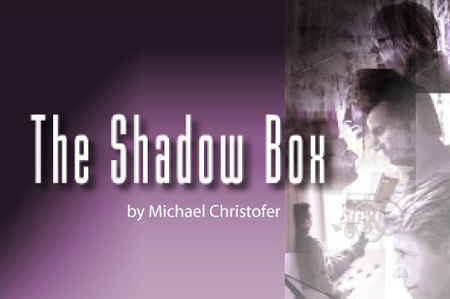
‘’THE SHADOW BOX’ emotionally draining at CSU
“This lifetime doesn’t take forever.” “Every life has to make sense on its own terms.” With these two sentences ringing in my ears, and emotions welling, I left Cleveland State University’s 2009 Summer Stages production of ‘THE SHADOW BOX.’
Michael Cristofer’s ‘THE SHADOW BOX came to Broadway on March 31, 1977, with a cast that included, Mandy Patinkin and Geraldine Fitzgerald. It went on to win a Tony Award for Best Play and a Pulitzer Prize for Drama. The script was made into a television movie in 1980, which was directed by Paul Newman.
In the act of shadow boxing, a person fights with an imaginary opponent, often while encased in a psychological container, which holds his/her thoughts and may allow others to look inside. Since in Cristofer’s play we get to “eavesdrop” into the lives of three terminally ill patients as they live the last weeks of their lives in hospice cottages on the grounds of a hospital, the title is quite appropriate.
Adding to the shadow box effect is the writer’s device of having the characters sitting on an isolated stool and being asked questions about the dying process by a voice which represents the audience’s thoughts. And, there is also the fight each is having, boxing with the illusion of their upcoming death.
It helps in viewing the play to be aware of Elizabeth Kubler-Ross’s theory of the five stages which a person, and those in relationships with them, often go through when diagnosed with a terminal illness. These stages are: denial (“This can’t be happening”), anger (“It’s not fair”), bargaining (“I’ll do anything not to die”), depression (“There is no point of treatment”) and acceptance (“I accept that my life is over”). As we watch ‘THE SHADOW BOX,’ we see the participants in or transition into these stages.
Joe, a middle-aged, blue-collar family, man has accepted his fate, but his wife Maggie is in denial. She refuses to even step into the hospice cottage as this action will take her into acceptance.
Brian, a bisexual English professor is being cared for by his lover, Mark. Each appears to be in acceptance, yet Brian is escaping into a world of illusion by submerging himself into nonsensical writing. And, when forced to face reality during a visit by Brian’s ex-wife, Mark shows that he is actually in depression. His reality climaxes in a brilliantly written monologue which, in part says, “We are dying here, lady. That's what it's about. Brian looks at me and I can see it in his eyes. One stone slab smack in the face, the rug is coming out from under, the light is going out. It's sick and putrid and soft and rotten and it is killing me.”
And then there is Felicity, a crusty old woman who has been living a life of delusion, a delusion that is keeping her alive.
CSU’s production, under the direction of Everett Quinton, hits most of the right notes. The pacing is good, the emotional levels held in proper check, the intensity is well defined. The staging, in which we see all three families working in the same set, at the same time, yet in isolation, is extremely creative. The weakness is the lack of balance in the level of acting between the Equity cast members and the student performers.
Greg Violand (Brian) walks his character’s fine line between reality and escapism. He is totally believable as the intellect who attempts to fool both himself and all about him, that he has accepted his fate.
Tom Woodward (Joe), looking gaunt and gray, is totally natural in his characterization. The emotional strain between Joe and his wife Maggie is like viewing a tightly pulled rubber band, ready to snap, with each actor on an opposite end. Ursula Cataan is totally on target as the denying wife.
Story Comeaux, as Beverly, Brian’s flighty ex-wife, who keeps her emotional distance from the death issue, has some excellent scenes. Lydia Chanenka, (Felicity), the strongest of the non-professional cast members, is appropriately pathetic as the old lady.
The rest of the cast is acceptable, but not outstanding. Justin Steck, does fine as the unseen narrator, but is on the acting surface when he appears before our eyes. Randy Muchowski as Mark, is fine in most of his scenes, but doesn’t have the acting depth to plumb out what should have been the play’s most emotionally wrenching monologue. (Oh, to have seen the then young Mandy Pantinkin wring pathos out of that speech.) Denise Astorino as Agnes, Felicity’s daughter, gives a properly emotional portrayal. Charles Hargrave has little to do as Joe and Maggie’s son.
Don McBride’s set design works beautifully, Dennis Dugan’s lighting was spotty. In some scenes there were light spillages that allowed for the wrong actors to be highlighted, and, at times, light shone into the eyes of audience members. Alison Garrigan’s costumes hit the 1970s well. It would have been helpful if the program had indicated the date of the play so that Garrigan’s clothing didn’t have to carry the whole burden.
The selection of “Don’t Sit Under the Apple Tree” as the play’s final music, was era and emotionally wrong. It is a 1942 song (incidentally, written by Clevelander Sam Stept), which came on loud and sprightly after the play’s serious emotional ending, jarring the audience’s senses.
CAPSULE JUDGEMENT: ‘THE SHADOW BOX’ is a very well written, purposeful, and emotion-laden script. It gets a very serviceable production at CSU, that is worth seeing.

